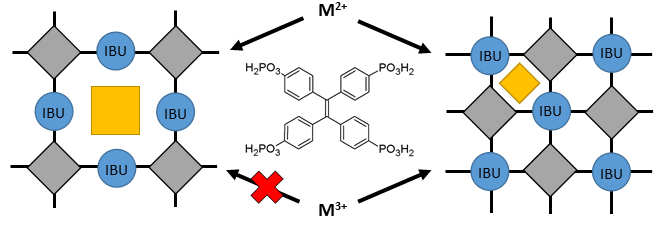New isoreticular phosphonate MOFs based on a tetratopic linker
Felix Steinke¹, Ali Javed², Stephan Wöhlbrandt¹, Michael Tiemann², Norbert Stock¹
¹ Institute of Inorganic Chemistry, Christian-Albrechts-University Kiel, Kiel, Germany
² Department of Chemistry, Paderborn University, Paderborn, Germany
A recently developed strategy for the synthesis of porous metal phosphonates focuses on the use of large tri- or tetratopic linker molecules, which achieve porosity through their space demanding trigonal, tetrahedral or almost square-shaped planar arrangement. As part of these studies, our group recently reported the use of 1,1,2,2-tetrakis(4-phosphonophenyl)ethylene (H₈TPPE) as a suitable starting material. In combination with divalent metal ions, three new MOFs with an unexpected structural diversity depending on the applied reaction conditions were discovered.[1]
This contribution focuses on the use of trivalent metal ions and the tetraphosphonic acid H₈TPPE. Our study resulted in the formation of the three isoreticular porous phosphonates of the composition [M₂(H₂O)₂(H₂TPPE)] ∙ xH₂O (M= Al³⁺, Ga³⁺, Fe³⁺), denoted M-CAU-53. The structure of CAU-53 was solved and refined from powder X-ray diffraction data and exhibits monoperiodic pores. The three compounds were comprehensively characterized. Interestingly, they show different properties e.g. thermally induced structure transformation and proton conductivity.[2]

Fig. 1 The underlying concept in the use of a square-shaped tetratopic linker molecule for the synthesis of porous metal phosphonates shown for the linker 1,1,2,2-tetrakis(4-phosphonophenyl)ethylene.
References:
[1] S. Wöhlbrandt, C. Meier, H. Reinsch, E. Svensson Grape, A.K. Inge, N. Stock, Inorg. Chem. 2020, 59, 13343.
[2] F. Steinke, A. Javed, S. Wöhlbrandt, M. Tiemann, N. Stock, in preparation.
